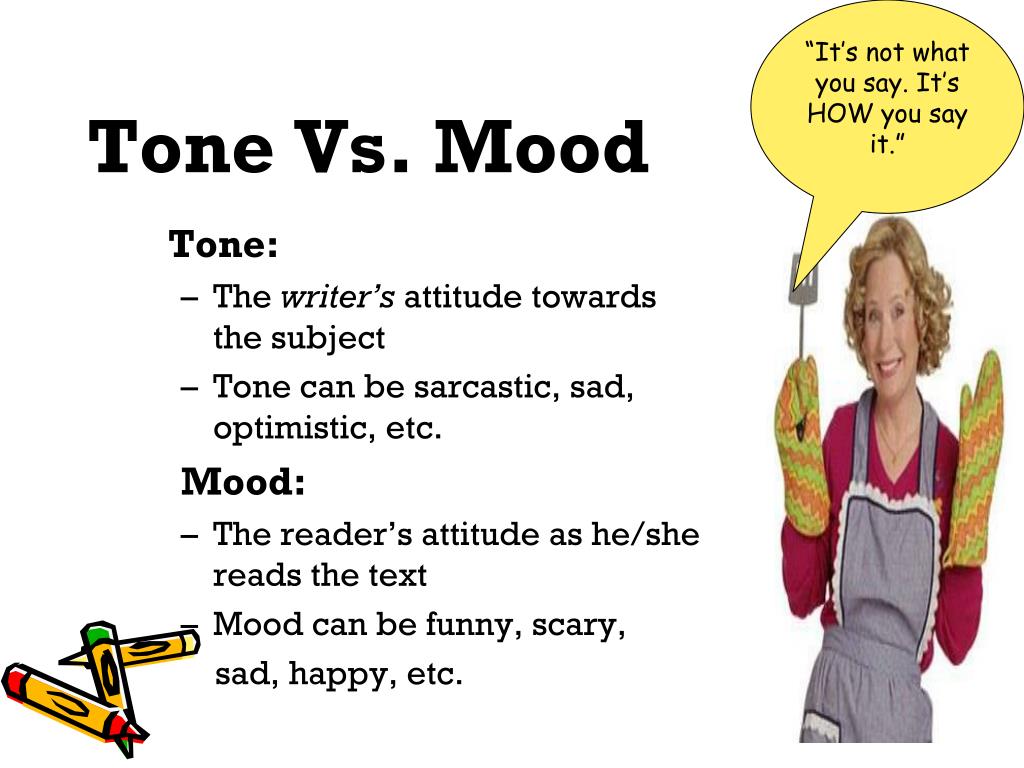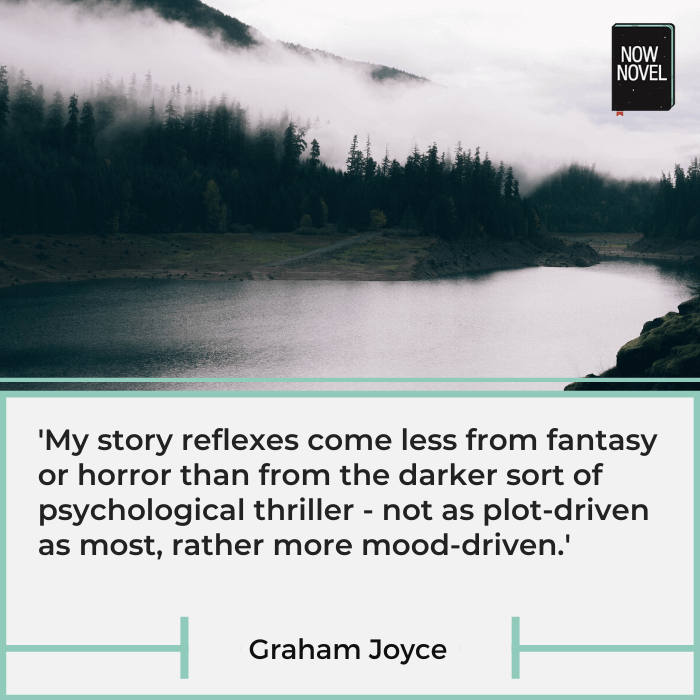
We can identify both by looking at the setting, characters, details, and word choices. The mood is the atmosphere of the story, and the tone is the author’s attitude towards the topic. If you can do that, then you can be consistent with your moods in writing.Mood and tone are two literary elements that help create the main idea of a story. Think about how you feel when experiencing the emotions you want to put into your writing and write about those experiences. As long as you’re keeping your characters realistic or distributing facts with a certain enthusiasm, then the emotions they experience will help to set the right atmosphere for your piece. The types of moods in writing will usually come naturally to the writer as they are composing the piece. If there isn’t passion behind the subject matter, then the reader isn’t going to care about what has been written. If the writer is excited by the subject material, then that excitement will rub-off on the reader to create a fun experience. With the right type of mood included in the text, the information becomes easier to absorb by the reader. Moods are often associated with fictional writing, but non-fiction writing also has moods in it as well. So sure – we can break it down into generic positive and negative atmospheres, but we are much more than that. For writing to be realistic, the mood of any writing must also be equally complex. The human experience goes through varying levels of positive and negative experiences every day.

Others might feel more “relief.” Some might feel “joy.” This mood could be “disappointment” because some people thrive on high-pressure assignments. You’ve now been left with a day of casual paperwork to do instead of a high-pressure assignment. Now let’s say that because the boss called off for the day, the work which was assigned to you is now going to be assigned to someone else. The next mood you’d be experiencing would likely be “relief.” Some might even feel sorry for their boss, which would create the mood of “pity.” Now let’s say you get to work and discover that your boss called off for the day because of a nasty cold. Those moments when you start your morning routine, not really wanting to go to work – that mood would likely be called “dread.” Let’s say it’s Monday and you know you’ve got a ton of work to do and an angry boss waiting for you. In writing, the atmosphere of an entire piece can vary from scene to scene. Just don’t settle for being “positive” or “negative” in every piece that you write.ĭoes This Mean There Are Unlimited Moods? Starting with 2 moods is a good place to begin practicing how you set the atmosphere of a story as a beginning writer. Sometimes people feel apprehension not because they’re in a bad mood, but because they’re so excited to get started with something new. Love, for example, can be either a positive mood or a negative mood.

Yet what makes humanity so beautiful is the fact that we are emotionally complex beings. Then these emotional keywords and their synonyms would be sprinkled throughout the text to set the atmosphere of the piece.įor basic writing principles, this is a good first learning step. Negative moods would be described as being nervous, morose, or horrified.


Positive moods would be described as being energetic, empowered, or enlightened. When you look at the average English writing class, you’ll find that most instructors will say that there are only two generic moods: positive and negative. Following these basic moods can help to generate the response that is desired from the reader. This means you’ll find two basic moods are available to writers today. Having someone experiencing the best day of their life by sitting in their room, crying their eyes out, isn’t going to make sense if there isn’t an explanation involved. Otherwise, the composition of the story is going to feel awkward for the reader. If you want people to feel sad, then your writing would need to be reflective of this as well. If you want people to smile, then you’d write words that make the reader smile. When we’re talking about the atmosphere of a story, what we’re really describing is the emotional impact that is expected from reading the piece. This means the mood found in writing is going to be reflective of the emotion that you’re trying to produce in the reader as a writer. This is done to create emotions within the reader through the use of specific descriptive words. The words that we choose to use will typically if into one of the types of moods in writing. This is what would be described as the mood of the writing. Every story, every textbook, and every other piece of writing has an “atmosphere” to it.


 0 kommentar(er)
0 kommentar(er)
